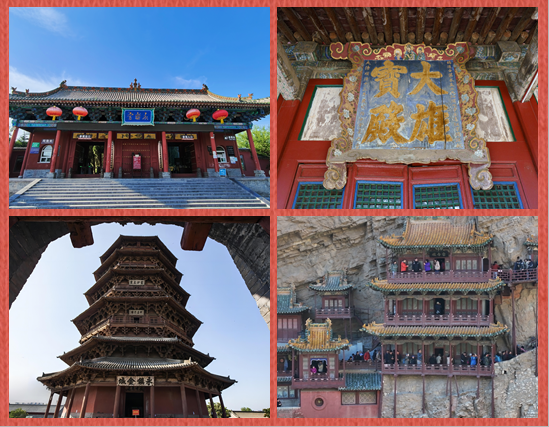Demonstration zone plays integral role in reinvention of Shanxi
Updated: 2023-11-17

Construction on Jinko Solar's megasized comprehensive new energy facility is ongoing at the Shanxi Transformation and Comprehensive Reform Demonstration Zone. [Photo provided to China Daily]
Decades of heavy industry being replaced by lighthouse factories and technology enterprises as province seeks to future-proof its economy
Since the North China province of Shanxi was designated by the State to implement a transformation campaign for resources-reliant local economies more than a decade ago, the Shanxi Transformation and Comprehensive Reform Demonstration Zone has played a leading role in this historic mission.
Shanxi has been among the most important suppliers of energy resources, especially coal, to the country for many decades. However, the challenges to economic development resulting from heavy reliance on coal mining and other heavy industries had become conspicuous since the end of the last century. As a result, local authorities began to implement an economic transformation move under the guidance of the country's central authorities more than 10 years ago.
This campaign features the upgrading of traditional industries toward the direction of cleaner, safer and more efficient operations and fostering emerging industries as new growth engines.
The Shanxi Transformation and Comprehensive Reform Demonstration Zone, which was founded in 2010 with the initial name of the National Pilot Zone for Transforming Resources-Reliant Economies, was the first major establishment of Shanxi to respond to this mission of transformation. It got its current name in November 2016.
Over the past decade and especially the past six years, the zone, located between the two central Shanxi cities of Taiyuan and Jinzhong, has become a beacon of high-quality development in Shanxi and a magnet for investment.
The zone is designed to foster strategic emerging industrial clusters including advanced manufacturing; the digital economy; information technology; semiconductors; synthetic biology; photovoltaics; new materials and modern services. And today, all the sectors have formed an advanced industrial system, thanks to the hefty investment made by businesses in Shanxi and beyond.
This year marks a milestone of the zone in terms of attracting investment and launching significant industrial projects.
A total of 24 large projects relating to economic transformation, with a special focus on the sectors of advanced manufacturing, digitalization and modern services, have been launched to date this year. It is noteworthy that their total pledged investment amounted to 120 billion yuan ($16.54 billion), almost equal to the total paid-in investment it secured in the past six years.
The largest project is a megasized comprehensive new energy facility funded by Shanxi-based Jinko Solar. With a total pledged investment of 56 billion yuan, the project broke ground on Sept 26. Its first phase is scheduled to be operational in the first quarter of 2024.
When it becomes fully operational in 2026, the facility will be capable of producing photovoltaic – or solar power – components with an annual capacity of 56 gigawatts, making it the largest in the industry globally.
Industry insiders said this is a significant project in Shanxi's economic transformation and energy revolution campaigns as it is expected to form a powerful new energy industry chain in the province.
On the same day of the groundbreaking ceremony, Jinko and the administrative committee of the Shanxi Transformation and Comprehensive Reform Demonstration Zone jointly hosted an investment promotion fair.
At the event, Jinko and the zone signed agreements with 36 enterprises in the solar power industry chain to launch upstream or downstream operations in relation with Jinko. Total pledged investment in these operations amounted to 20 billion yuan.
Another milestone project that the demonstration zone secured this year is a fiberglass manufacturing facility launched by Taishan Fiberglass Group headquartered in Tai'an, Shandong province.
Beginning construction in the Yangqu Industrial Park – a part of the demonstration zone – in early July, this project with a total planned investment of 7 billion yuan will be capable of producing 300,000 metric tons, or 3.6 billion yuan worth, of fiberglass annually when its first phase becomes operational in 2025.
Tang Zhiyao, board chairman of Taishan Fiberglass Group, said that this facility is expected to become a lighthouse factory in the worldwide fiberglass industry.
With eye-catching tags such as high efficiency, intelligence and environmental friendliness, the lighthouse factories are considered to represent the highest level of intelligent, digitalized manufacturing in the world.
Industry insiders said that the zone's success in attracting significant investments is a result of local authorities' efforts in improving the business environment.
While fulfilling its mission to pilot economic transformation, the zone is a test site of the province's institutional reforms, which aim to create a better environment for entrepreneurship.
Since the beginning of this year, the zone's authorities have renewed their efforts for business environment optimization, aiming to improve the confidence of investors and local entrepreneurs.
The latest policy move for the ease of doing business was an action plan announced by the zone's administrative committee on May 10 for institutional reforms related to improving administrative services.
By delegating power in business approval, streamlining licensing systems and providing whole-process assistance for enterprises' operations and policies for easier market access, the administrative committee pledged that the period from a project's agreement signing to construction will be shortened to at least 58 days from the average of 238 days.
This was exactly the case with the Jinko Solar and Taishan Fiberglass projects. According to an executive of Jinko Solar, the company signed the agreement of the new energy facility in the demonstration zone in May and construction of the project started in September. "This is an unexpected efficiency for a giant project like ours," the executive said.
Liu Xiaohua, an executive in charge of the Taishan Fiberglass project, said it signed a land use agreement with the zone on May 16, started leveling land two days later and began construction in less than two months. "The efficiency will offer a strong guarantee for our scheduled operations," Liu said.
Yang Yu contributed to this story.



